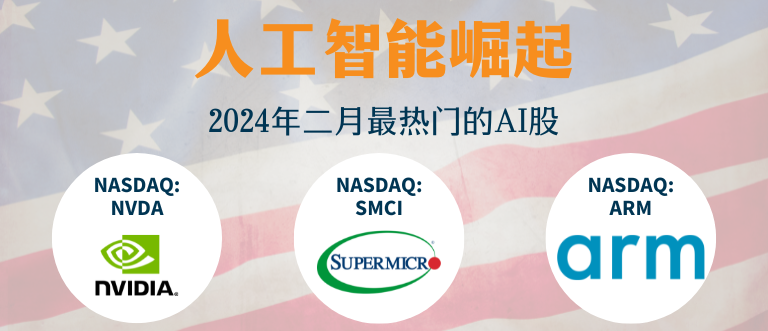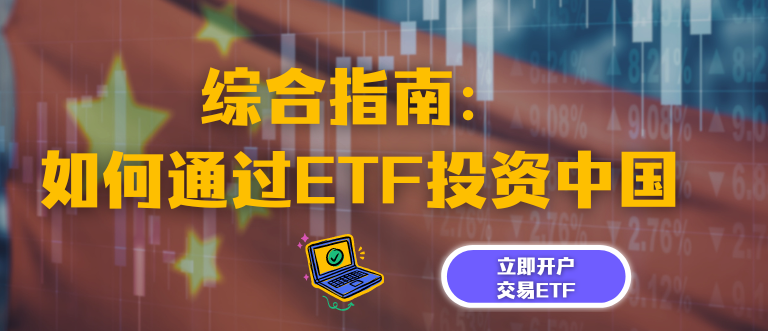Yield Pickup
Table of Contents
Yield Pickup
A key indicator in financial analysis, yield tracks the rate of return on investment over time. It shows the annual income as a percentage of the investment’s cost or market value, which is useful for investors and businesses. Knowing how to calculate yield may help you assess a company’s investment potential and make more informed financial decisions if you work in management or finance.
What Is a Yield Pickup?
A yield pick-up is the change in yield from one bond to another. Investors will talk about a yield pick-up if they sell one bond and acquire another one with a greater yield. In a similar vein, when contrasting the yield on a government bond with that on a corporate bond, the former is typically said to be higher.
Understanding Yield Pickup
An investing technique known as a yield pickup is exchanging lower-yielding bonds for bonds with greater yields. Gaining a higher yield allows for bigger profits, but the method is also riskier. If a bond’s yield is low, its maturity will be short; if it’s high, its maturity will be lengthy. Bonds with longer maturities are more affected by market interest rate fluctuations. So, the longer the bond’s maturity, the more interest rate risk the investor takes on.
Furthermore, yield and risk are positively related. Investors demand a greater yield to entice them to buy a bond with a higher perceived risk. The credit quality of bonds is directly correlated to their level of risk. As a result, there is an element of danger in a yield pickup, as the bond offering the highest yield is frequently of lesser credit grade.
Take the case of an investor who has a 4% yielding bond issued by Company ABC. In return for a bond from Company XYZ with a yield of 6%, the investor can sell this bond. With 6% minus 4%, the yield increase for the investor is 2%. Either a higher coupon or a higher yield to maturity (YTM)—or both—can be profitable for this approach. Yield pickup plays are riskier since bonds with a higher default risk typically have higher yields. While it would be ideal for bonds with the same grade or credit risk to participate in a yield pickup, this is not necessarily the case.
Working of Yield Pickup
Bond yields go up and down in tandem with changes in general interest rates.
Yields and bond prices are inversely proportional. Investors can sell their current bonds and purchase new ones at a higher yield, known as a pickup if interest rates rise. If the risk of the old bonds is the same as that of the new ones, then the investor has increased the return on their investment without increasing their risk.
The only option to get a lift while interest rates are flat or falling is to purchase bonds with higher interest rates already issued or to take on more risk in exchange for a higher return on bonds with lower interest rates. A pickup technique might be risky or expensive in certain situations. The majority of bond trades occur because of the possibility of a pickup.
The pure yield pickup switch is a similar phrase. A bond with a lower yield is exchanged for a bond with a greater yield in this transaction. The trader is willing to take on more risk in pursuit of a higher potential reward.
Factors to Think About
Besides a pickup, there are further motivations for trading bonds. Consider a bond issuer whose credit is about to be upgraded, especially if that upgrading would elevate the bond’s rating from trash to investment grade. Additionally, bond traders can mitigate their portfolio’s default risk by making credit-defence trades or take advantage of expected outperformance in a certain industry or area by making sector-rotation trades.
Investors can alter the bond maturities in a portfolio by engaging in yield curve adjustment transactions, which are influenced by their assumptions regarding the future of interest rates. Shortening the length of their portfolios is something they aim to do when they anticipate interest rates to rise. People prefer their portfolios to be longer-term investments when they think interest rates will go down. Whatever the situation, the traders’ goal is to increase the yield.
Calculation of Yield Pickup
To determine yield, you may do it like this:
- Ascertain the bond’s or stock’s current market worth or original investment.
- Find out how much money came in from the investment.
- Take the revenue and divide it by the market value.
- Take this sum and multiply it by 100.
The following formulae can be used to calculate yield, depending on the type of investment:
- (Dividends per share/stock price) x 100 = Stock yield.
- Bond yield = (coupon / bond price) x 100
- Real estate yield = (net rental income / real estate value) x 100
Example of Yield Pickup
If an investor were to move their money from one investment that was yielding a lower return to another that was yielding a greater return, this would be called a yield pickup. Three instances from the realm of business and money are as follows:
- One method for an active bond portfolio manager is to rebalance the portfolio by selling bonds with lower yields and reinvesting the money in bonds with higher yields. This is called a yield pickup strategy. To illustrate, they may sell a US Treasury bond with a yield of 1.5% for ten years and then use the money to buy a corporate bond with the same term but a yield of 3%. A 1.5% increase in yield would be the outcome of this.
- Loans and Deposits at Banks: One way for a commercial bank to increase its yield is to shift its balance sheet towards loans with higher yields and away from cash deposits with lower yields. Suppose a bank was to swap out a cash deposit earning 1% for a business loan yielding 5%; this would lead to a yield pickup of 4%. Due to this change, the bank’s net interest margin can go up, making it more profitable overall.
- Thirdly, the impact on the asset manager’s performance: if they want their investment fund to do better, they can use a yield pickup strategy, which involves moving money out of low-yielding assets like cash or government bonds and into higher-yielding ones like high-yield bonds, dividend-paying stocks, or REITs. This change can potentially increase the investment fund’s total return and boost yields.
Conclusion
The Yield Pickup investing strategy aims to increase a portfolio’s return by shifting capital from assets with lower yields to those with higher yields. Interest rate differentials, credit quality variances, and changes in economic conditions can cause bond yields across markets and asset classes to fluctuate. Investors may use this method to their advantage.
It is important to weigh the benefits of Yield Pickup against the dangers it may entail before committing to the strategy since it can boost profits but also increase credit risks, market volatility, and currency exposure.
Frequently Asked Questions
A pure yield pickup swap aims to enhance the yield on bonds by swapping them for another set of bonds. This concept is important since it presupposes that bond risk will not rise to achieve the desired increase in yield.
Investors may find ways to boost their returns on investment (ROI) with the help of Yield Pickup. Investors can maximise their interest or dividend income by capitalising on yield discrepancies among different investment alternatives.
Using % yield as a grading system, we may say things like 90 is excellent, 70–80 is good, 50–70 is decent, 40–50 is acceptable, 20–40 is terrible, 5–20 is extremely poor, and so on.
The term “yield” is used to describe the amount of money that comes out of an investment over a certain time frame. It’s a percentage that depends on the investment amount, the security’s face value, or its current market value. Holding a security can result in earning interest or dividends, which are both included in yield.
The percentage yield is 100% if the theoretical and actual yields are equal. Since the actual yield is frequently lower than the theoretical value, the per cent yield is typically less than 100%. This may be caused by competing or incomplete responses, as well as sample loss during recovery.
Related Terms
- Contrarian Strategy
- Interpolation
- Intrapreneur
- Hyperledger composer
- Horizontal Integration
- Queueing Theory
- Homestead exemption
- The barbell strategy
- Retirement Planning
- Credit spreads
- Stress test
- Correlation coefficient
- Accrual accounting
- Growth options
- Intrinsic Value
- Contrarian Strategy
- Interpolation
- Intrapreneur
- Hyperledger composer
- Horizontal Integration
- Queueing Theory
- Homestead exemption
- The barbell strategy
- Retirement Planning
- Credit spreads
- Stress test
- Correlation coefficient
- Accrual accounting
- Growth options
- Intrinsic Value
- Growth Plan
- Advance Decline Line
- Accumulation Distribution Line
- Box Spread
- Charting
- Advance refunding
- Accelerated depreciation
- Amortisation
- Accrual strategy
- Hedged Tender.
- Value investing
- Capitalisation
- Long-term investment strategy
Most Popular Terms
Other Terms
- Options expiry
- Adjusted distributed income
- International securities exchanges
- Settlement currency
- Federal funds rate
- Active Tranche
- Convertible Securities
- Synthetic ETF
- Physical ETF
- Initial Public Offering
- Buyback
- Secondary Sharing
- Bookrunner
- Notional amount
- Negative convexity
- Jumbo pools
- Inverse floater
- Forward Swap
- Underwriting risk
- Reinvestment risk
- Final Maturity Date
- Payment Date
- Secondary Market
- Margin Requirement
- Mark-to-market
- Pledged Asset
- Subordinated Debt
- Trailing Stops
- Treasury Stock Method
- Stochastic Oscillator
- Bullet Bonds
- Basket Trade
- Exchange Control
- Notional Value
- Relevant Cost
- Dow Theory
- Speculation
- Stub
- Trading Volume
- Going Long
- Pink sheet stocks
- Rand cost averaging
- Sustainable investment
- Stop-limit sell order
- Economic Bubble
- Ask Price
- Constant prepayment rate
- Covenants
- Stock symbol
- Companion tranche
Know More about
Tools/Educational Resources
Markets Offered by POEMS
Read the Latest Market Journal

本文旨在为中级外汇交易者提供必要的信息和知识。它将涵盖我们上一篇文章 “五分钟看懂世界上最活跃的市场-外汇差价合约(FX CFD)...

解锁台湾股市的投资潜力!深入了解由强大的技术驱动型经济推动的股票市场,2023 年机械和电气设备将占出口的 69%。在政治稳定、投资者友好的法规和健全的法律框架下,探索台积电和富士康等全球顶级企业。台湾股市值得称赞的历史表现和在国际贸易中的的重要性使其更具吸引力。在这个科技实力雄厚、经济稳定、充满活力的股票市场中,抓住增长机遇!

了解外汇市场 外汇交易市场又称外汇市场,是一个买卖货币的全球性金融市场。它是全世界规模最大、流动性最强的金融市场,每日交易量超过 6 万亿美元。但外汇市场有一个重要却常被忽视的一点,就是它受交易心理的影响。在本文中,我们将探讨外汇市场的复杂性,还有把重点放在交易心理与传统交易策略共同发挥的关键作用...

五分钟看懂世界上最活跃的市场 -外汇差价合约(FX CFD)
外汇交易市场俗称外汇或外汇市场,是全球金融市场的支柱。它是世界上最活跃的市场,2022 年 4 月,全球交易额达到创纪录的每天 7.5 万亿美元[1] 。这个活跃的市场为交易者提供了利用货币价格波动赚取利润的机会。在本文中,我们将解释外汇市场的基本原理,助您了解其投资机制。 什么是外汇? 外汇市场是一个分散的全球市场,世界上所有货币都在这里进行交易...

随着通胀数据趋向 2% 的理想目标,人们普遍乐观地认为,在任何可能的降息之前,市场都不会受到不利影响。以下是美股市场2024年的一些重要事件,投资者在做出投资决策时可以参考留意。

根据《东南亚态势报告:2023》,失业和经济衰退是当前东南亚面临的主要挑战。各国采取了各种政策和措施以恢复经济,尽力摆脱新冠疫情的影响。尽管如此,越南在经济和社会方面展现出了令人满意的复苏迹象,经济增长逐季上升,成为世界经济的亮点之一。虽然全年GDP增速放缓至5.05%,低于政府6.5%的目标,但越南仍然是地区和世界经济增速较快的国家之一。






















